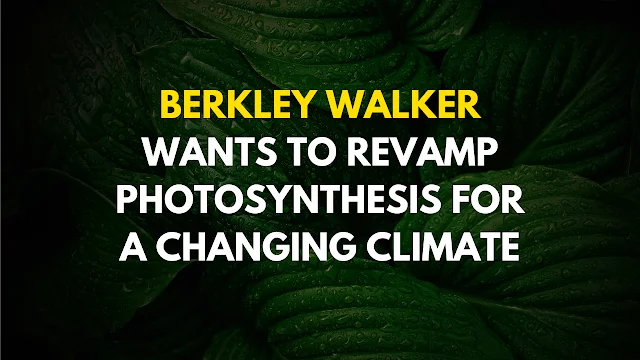Helping plants work better could be important for feeding people, especially as the Earth gets warmer.
Berkley Walker didn’t plan to be a scientist; he wanted to be an entrepreneur. He started a granola bar company in high school in Portland, Ore., which helped pay for his bachelor’s degree in microbiology.
After college, Walker worked as a product manager at an instrumentation company in Washington state. He planned to go to business school and then enter the biotech field. However, his plans changed after taking a class on environmental biophysics at nearby Washington State University in 2009.
The course was all about using math to understand how things work in nature. Walker found it fascinating to figure out how energy and matter move around in the environment. That’s when he decided he wanted to become a plant scientist. “I wanted to have some kind of usefulness to the world,” Walker says. “Feeding people is where I settled.”
Amazing but inefficient plants.
Today, at Michigan State University, Walker is curious about how plants make their food using sunlight. He wants to learn all the tiny details about it so he can help make it even better.
He remains deeply fascinated by plants: “You just take this little seed, you put it in the dirt and then you get this plant,” he says. “And it spreads these leaves out. And those leaves soak up the sunlight, and they clean carbon dioxide from the air. They use it to make the food we eat, the clothes we wear, the air we breathe, and the energy we use. And that’s just miraculous.
Photosynthesis is amazing, but it’s not very efficient. Only about 1 percent of the sunlight a leaf gets turns into usable energy. That’s because sometimes the leaf messes up when it’s trying to turn carbon dioxide into sugar. Instead of grabbing carbon dioxide, it grabs oxygen by mistake. This mistake makes a compound that stops photosynthesis from working well. There’s a process called photorespiration that fixes this mistake, but it uses a lot of energy.
In the Midwest of America, during the time when wheat and soybeans grow, this mistake causes a huge loss of calories, about 148 trillion! To give you an idea, if you turned these calories into doughnuts, you could make a stack of doughnuts that would reach to the moon and back more than 20 times!
If scientists can figure out how to make photorespiration work better, it could help farmers grow more food. Walker and his team came up with a cool way to study this. They figured out a way to freeze a leaf’s metabolism so they could see how it works. They drilled a hole in the machine they use and sprayed liquid nitrogen onto the leaf. This freezes it really fast, so they can study it without it changing.
Their research found out that sometimes, the plant uses some of the stuff made during photorespiration for other things, like making proteins. This means if we can make photorespiration work better, we might be able to grow crops that are more nutritious and have more protein. But before we make any changes, we need to understand what other effects it might have.
A generosity of spirit.
People who know Walker well say he loves working with others and is really kind.
Don Ort, a scientist who taught Walker for almost three years, says Walker is a great teacher and friend. “He loves teaching students and working with other scientists,” Ort says. “He’s really excited about what he does. He does it with lots of energy and hope. And it makes everyone around him feel excited too.”
Walker thinks of plant science as a big group all trying to solve two big problems: How to grow more food for more people, and how to do it when the weather is changing. He believes we’ll find answers in the next few decades, whether it’s from his work or someone else’s.
“Whoever figures it out, and if it works for lots of plants, that’s amazing,” he says. “That’s what we’re trying to do.”







